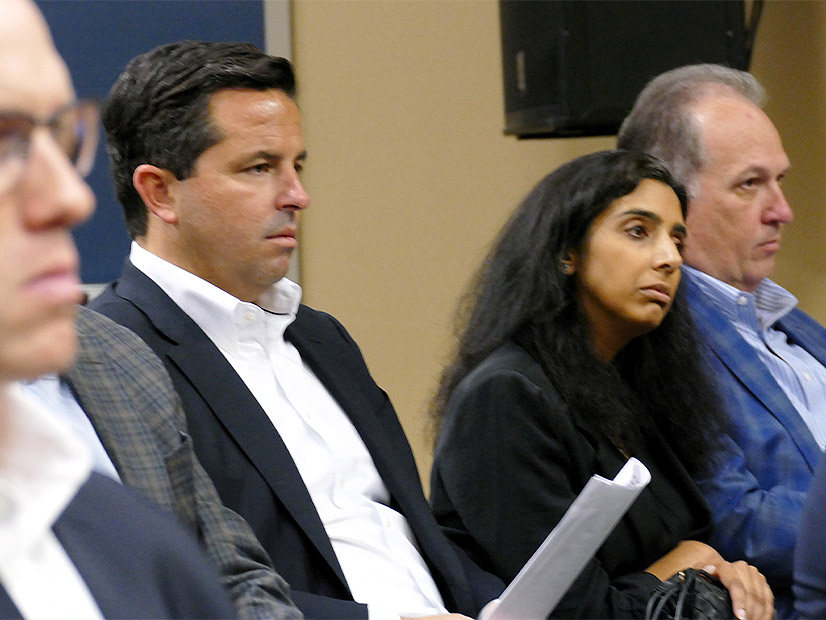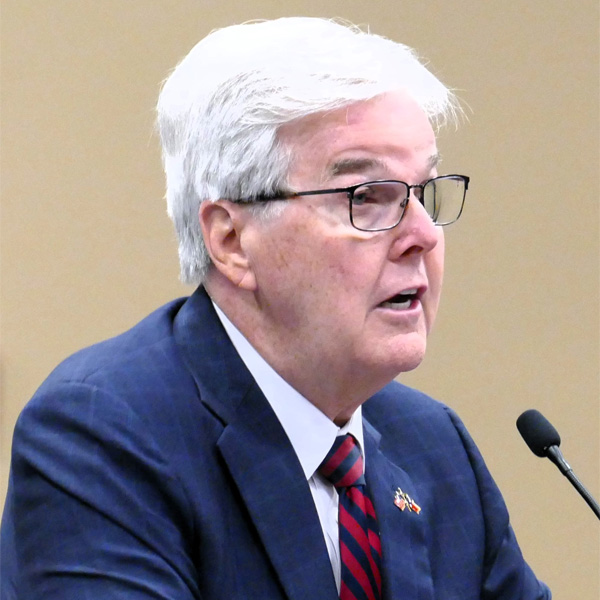A new white paper by The Brattle Group offers a point-by-point comparison of CAISO’s Extended Day-Ahead Market and SPP’s Markets+ that leans in favor of EDAM but stops short of endorsing either market.
The paper, published Oct. 1, likely will further fuel the ongoing and contentious debate between supporters of the two markets.
It examines and compares seven design features in each market, including transmission optimization, fast-start pricing, real-time unit commitment (RTUC), procurement of imbalance and flexibility reserves, seams optimization, greenhouse gas pricing and congestion revenue allocation — all of which have been the subject of controversy between the two sides.
“Many stakeholders in the [Western Interconnection] have suggested that certain market design elements, available in one market but not the other, will have material impacts on market outcomes and customer costs,” the paper says. “We aim to compare specific elements of the two market designs and, where possible, provide evidence that sheds light on where one market’s design is more likely to improve customer outcomes than the other.”
Brattle produced the study on behalf of PacifiCorp, which in April became the first utility to sign an EDAM implementation agreement with CAISO. A separate Brattle study, released in September, found PacifiCorp could earn up to $359 million a year in net benefits from participating in the ISO’s day-ahead market, nearly double a previous estimate. (See Updated EDAM Study Shows Doubling of PacifiCorp Benefits.)
“As we look at the future of the West and the next stage of market evolution, it’s clear that the logical next step is the EDAM,” Mike Wilding, vice president for energy supply management at PacifiCorp, said in a statement. “We have to strategically harness as much of the existing transmission and resource diversity of the West as we can, in order to benefit our customers, while maximizing the investments that will meet the evolving needs of the region into the future.”
While resource diversity wasn’t a focus of the Oct. 1 analysis, the paper’s introduction emphasized Brattle’s finding from previous EDAM benefit studies performed for Western utilities: that the biggest driver of benefits in a day-ahead market will be creating the largest possible footprint containing the greatest diversity of load and resources — a point repeatedly argued by key EDAM supporters.
“While some of the design differences between Markets+ and EDAM will impact market outcomes and overall market efficiency, they are unlikely to have a material effect on customer savings,” the paper says. “Various analyses of customer benefits from market participation indicate that the largest drivers of customer savings will be … the diversity of load and generation resources available in the markets, and the connectivity between participating members, which all lead to increased economic trading and lower curtailments in the market.” (See Brattle New Mexico Study Shows EDAM Benefits Outpacing Markets+ and NV Energy to Reap More from EDAM than Markets+, Report Shows.)
Flow-based vs. Contract Path
The core of the paper starts with an examination of a market feature that a core group of Markets+ funders addressed in their most recent “issue alert” covering market seams: transmission optimization. (See Markets+ ‘Equitable’ Solution to Seams Issues, Backers Say.)
In their Sept. 17 alert, the Markets+ backers contend that, unlike the SPP market, EDAM doesn’t rely on a “full” flow-based approach for optimizing transmission use.
“As a result, EDAM transfers between [balancing authority areas] and between [transmission service providers] will continue to be subject to contract-path scheduling limits used under the [open access transmission tariff] framework (and currently employed in WEIM [the Western Energy Imbalance Market]),” the alert says.
The Brattle paper attempts to deconstruct that contention, arguing that both markets will be required to recognize contract path limitations because of “the complex nature of transmission rights” in the West, where the operation of transmission systems largely is decentralized because of the absence of an RTO.
“This is consistent with both markets’ tariff language filed with the Federal Energy Regulatory Commission, which indicate that both markets plan to recognize contract-path transmission constraints where appropriate,” Brattle says, noting that FERC likely would have directed either market operator to include contract path constraints in their market-clearing processes if they’d proposed “purely” flow-based optimization.
“Ignoring contract path rights in regional market clearing engines can result in commitment and dispatch decisions that create negative outcomes for neighboring entities,” Brattle writes. “For example, a market dispatch solution using a transmission asset beyond the contracted capacity can create congestion on the asset and impair the utilization of other parties’ transmission rights.”
Brattle cited the controversy surrounding MISO’s integration of Entergy’s sprawling service territory (now MISO South) as a cautionary example of the consequences of ignoring contract path limitations in market dispatch. In that situation, MISO initially dispatched energy between its North and South regions without considering those limitations, which created parallel flows on neighboring systems and prompted SPP to “file a complaint with the FERC stating that ‘significant intentional, unscheduled incremental power flows are crossing SPP’s system without any corresponding reservation, service agreement or compensation.’”
Western stakeholders concerned about the impact of contract path limitations would be best served by the entire region joining the same market, Brattle said.
“This would bring all the physical transmission assets under the control of a single market operator, thereby reducing the need for contract path constraints. Moving towards a joint transmission tariff or a full regional transmission organization would further reduce, and possibly eliminate, the need for contract path constraints altogether,” the paper says.
Fast-start Pricing
In another section, the Brattle paper plays down the importance of one market feature that Markets+ supporters have argued is an important benefit of the SPP market but notably absent from CAISO’s markets: fast-start pricing (FSP).
“Some stakeholders have presented analyses suggesting that FSP has a substantial impact on market prices and revenues collected by generation resources that can come online quickly (‘fast-start resources’),” Brattle writes. “However, evidence from several U.S. markets, including SPP, indicates that FSP has a very minimal impact on market prices, impacts relatively few hours, and does not materially increase the market revenues of fast-start resources.”
The paper points to discrete analyses performed by the market monitors for ISO-NE, MISO and SPP that showed “the overall frequency and magnitude of the price impacts of FSP [in each market] were very small.”
For example, a MISO study covering 2016 showed FSP affected only 7.7% of real-time clearing intervals and increased real-time prices by just 1 cent/MWh, while an SPP study for 2022 found FSP increased fast-start resources’ day-ahead energy revenues by about 1.5% and real-time revenues by about 0.5%.
Additionally, Brattle says, PJM’s Monitor “has also indicated that FSP potentially undermines the objective of reducing production cost, and its implementation in the PJM market has distorted efficiency.”
Brattle also questioned the validity of a 2022 study conducted by consulting firm Energy GPS for Canada-based energy trader Powerex and the Portland, Ore.-based Public Power Council (both key Markets+ supporters). The study found that if CAISO markets had used FSP over 2017-2020, prices would have increased by $15 to $23/MWh and generators would have collected an additional $1.2 billion to $2 billion in market revenues.
“The analysis informing [the Energy GPS] white paper calculated … fast-start units’ impacts on energy prices as the difference between the marginal cost of starting and running peaking units and the average energy price at regional pricing hubs (NP15 and SP15 in CAISO, plus the Southwest and Northwest regions),” Brattle said. “The study did not simulate a counterfactual market commitment and dispatch solution for the CAISO market to validate this impact, which falls short of the analytical rigor of the analysis conducted by the independent market monitors for the MISO, SPP and ISO-NE markets.”
Jeff Spires, director of power at Powerex, said his “first impression” was that Brattle’s assessments of FSP was “flawed in multiple areas.”
“Brattle mischaracterizes the methodology used by Energy GPS to assess the impact of fast-start pricing in the west and misrepresents the results of their analysis,” Spires told RTO Insider in an email, adding that the paper “selectively refers to certain historical data from eastern markets to support its conclusion, while failing to include other more recent metrics demonstrating a significant impact of fast-start pricing in eastern markets, including PJM and MISO.”
Asked if he could supply those metrics, Spires said the Markets+ funders are compiling the information and will share it when it’s ready.
Michael Linn, director of market analytics at the PPC, said the Brattle paper “misrepresents” the results of the Energy GPS study, and that the $15-$23/MWh range represented market prices “for the evening peak hours, typically the highest priced hours in the West when fast-start units are most often dispatched.”
“The Brattle study takes these numbers and compares them to multi-month averages in other studies. The Energy GPS study included an apples-to-apples estimate of average fast-start price impacts that show prices increases by $2 to $4/MWh in Northern California, $4 to $9/MWh in Southern California over the study period, and lower impacts in the Pacific Northwest and Southwest,” Linn wrote.
Linn said also that “while the Energy GPS study did not perform a counterfactual analysis, the study relied on publicly available data on actual historical fast-start unit dispatch and fuel costs, providing a useful and practical approach based on real-world data.”
Linn criticized the Brattle report for “narrowly” focusing on “a few criticisms” of FSP and ignoring the “overwhelming evidence” of the benefits of the practice, “most recently echoed by the Western EIM Governing Body expert.” In May, that expert, Susan Pope, told the Western Energy Markets Governing Body that FSP could fix certain “price anomalies” in CAISO markets better than existing mechanisms for compensating fast-ramping resources. (See WEIM Expert Calls for Fast-start Pricing to Address ‘Anomalies’.)
‘Look Ahead’
The Brattle paper commends CAISO’s markets for using a market-clearing engine that relies on a four-hour “look ahead” period “that enables it to optimize real-time unit commitment decisions for generation resources in the market that can cycle on and off in four hours across the entire market footprint.”
In contrast, Brattle says, the market-clearing engine that SPP uses for its Western Energy Imbalance Service (WEIS) does not include a similar look ahead or perform RTUC, and the Markets+ tariff doesn’t indicate that practice will be adopted in the newer market.
“These additional features of the WEIM optimization will allow it to find lower-cost and more operationally responsive solutions relative to the Markets+ real-time clearing that will not perform unit commitment and relies on manual real-time unit commitment decisions,” the paper says.
Brattle notes the look ahead feature provides an advantage only real-time optimization, but does not affect day-ahead operations, “where both EDAM and Markets+ optimize unit commitment and day-ahead dispatch.”
In an email to RTO Insider, SPP spokesperson Meghan Sever said the WEIS design is “not relevant to a comparison of Markets+ and EDAM.”
“WEIS is a separate service provided under a different tariff than Markets+,” Sever wrote. “The study assumes Markets+ will not include real-time unit commitment, although it is clearly defined in the Markets+ tariff filing currently being reviewed by FERC.”
“We do not say that there is no real-time unit commitment, but rather that the real-time market clearing engine does not perform that function,” John Tsoukalis, a principal with Brattle and the report’s lead author, said in an email.
Tsoukalis said the section of the Markets+ tariff that lists the outcomes of the “Real-Time Balancing Market” does not include unit commitment, while another section describes unit commitment as being an outcome of the reliability unit commitment process.
Markets+ Wins on Seams
The Brattle study also takes a more favorable view of EDAM’s GHG pricing mechanism, which it says benefits from 10 years of operational experience in CAISO and the WEIM, and the ISO’s process for allocating congestion revenues in its markets.
But Brattle gives Markets+ higher marks for seams optimization, noting that the SPP market will require all participants along a market seam to offer buy and sell bids for import and exports at the seam — the practice of “intertie trading” — while in EDAM, intertie trading will only be activated if market members choose to do so and at the CAISO balancing authority area border.
“The automatic inclusion of intertie trading at the Markets+ seam is likely to deliver benefits to market participants, and similar broad availability of intertie trading would be an improvement to the EDAM design,” Brattle wrote.
‘Independent Evaluation,’ or ‘Limited’
Asked why PacifiCorp commissioned the study, spokesperson Omar Granados said the utility was seeking “to offer an independent evaluation of the market design, including the design differences between EDAM and Markets+. This information will be useful for potential future market enhancements and will help inform decision-making if the Western Energy Imbalance Market participants split their participation between two day-ahead markets.”
For its part, Brattle said it hoped the paper provides “helpful takeaways for stakeholders in both markets on where the respective designs can be improved in the future, and help the region focus its efforts on developing the markets to enhance the overall efficiency and outcomes for customers.”
CAISO and SPP offered predictably different takes on the study.
“We appreciate Brattle’s publication of the comparative design paper between Markets+ and EDAM,” CAISO spokesperson Anne Gonzales told RTO Insider. “The assessment aligns with our perspective that EDAM provides significant reliability and economic value to customers across the West as designed, with the largest seamless footprint possible providing for significant load and resources diversity as well as transmission connectivity, all key factors in enabling those benefits.”
SPP’s Sever said the RTO hadn’t been invited to participate in the study and was still reviewing the results.
“Beyond our assessment of the study’s conclusions, SPP also notes that its scope is limited and ignores a number of factors that stand to distinguish it from other options. Production cost studies don’t tell the entire story,” she said. “Apart from the unique Markets+ design elements that will benefit all Western entities, participants will benefit from an independent and transparent governance and robust stakeholder process that values all participants equally.”



